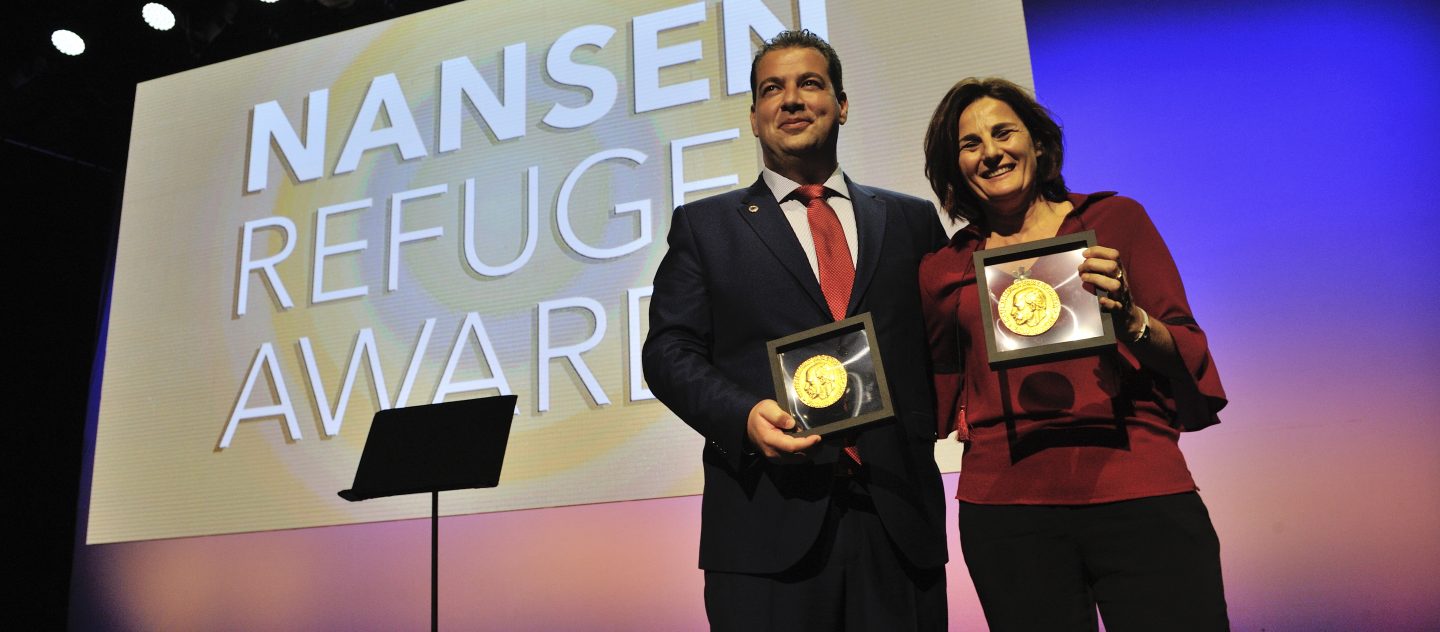Formerly known as the Nansen Medal, this award is named after the late Norwegian arctic explorer Fridtjof Nansen, who was appointed by the League of Nations, predecessor of the United Nations, to be the very first High Commissioner for Refugees in 1921. The award, consisting of a commemorative medal and a US$100,000 monetary prize is given annually to an individual or organization for outstanding work on behalf of refugees.
Born in 1861, Nansen was a scientist, a diplomat, a statesman and a humanist with a deep compassion for his fellow human beings. Eager to learn, Nansen became a pioneer in the field of applied science ranging from zoology, marine biology, oceanography and geology to anthropology and sociology. While still in his twenties, he acquired fame by crossing Greenland on skis in 1889.
But it is for his pioneering work on behalf of refugees that Nansen is most fondly remembered. After the First World War, the League of Nations asked Nansen in 1920 to organize the repatriation of some 450,000 prisoners of war. He succeeded by enlisting the support of governments and voluntary agencies.
Recognized as a charismatic leader, he was made the first High Commissioner for Refugees in 1921 – a post specially created by the League of Nations. He immediately undertook the formidable task of helping hundreds of thousands of refugees to survive, to acquire legal status and to attain economic independence. For the stateless refugees under his care, Nansen created the “Nansen passport,” which was ultimately ratified by 52 countries.
The International Red Cross and a number of governments then asked him to organize a relief programme for millions of victims of the Russian Famine of 1921-1922. Nansen won the Nobel Peace Prize in 1922. He was involved in the negotiations which led to the 1923 Treaty of Lausanne between the Greek and Turkish governments and later tried to help find a solution to the Armenian crisis. Nansen died in 1930.
To promote greater interest in the refugee cause and keep alive the humanitarian spirit of Nansen, the first UN High Commissioner for Refugees, G. H. van Heuven Goedhart, instituted the Nansen Refugee Award in 1954. The award is given out yearly to a person or group deemed to have performed outstanding services in supporting refugees. The aim of the Nansen Award is to focus attention on the plight of refugees and to encourage international assistance and cooperation for them.
The monetary prize that comes with the Nansen Award is donated by the governments of Norway and Switzerland to support a refugee project of the laureate’s choice.
2016 Nansen Award Winners – The Hellenic Rescue Team and Efi Latsoudi – Greek Volunteer
2015 Nansen Award Winner – Afghan refugee teacher Aqeela Asifi
2014 Nansen Award Winner – Butterflies with New Wings Building a Future
2013 Nansen Award Winner – Sister Angelique Namaika
2012 Nansen Award Winner – Hawa Aden Mohamed
2011 Nansen Award Winner – The Society for Humanitarian Solidarity (SHS)Yemen

